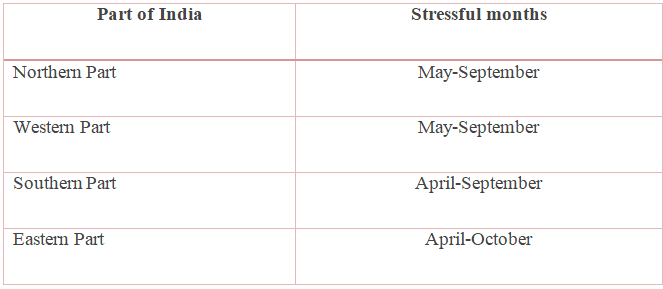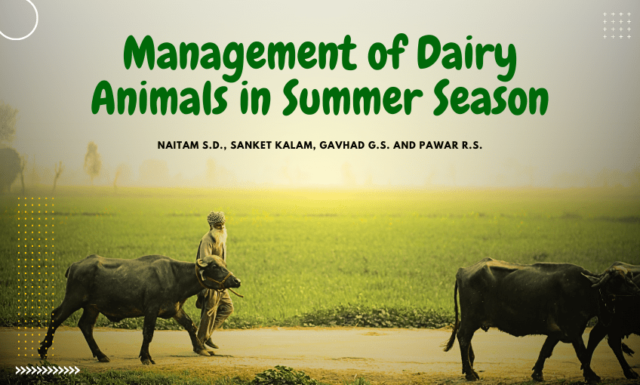Introduction:
Organisms, especially homeothermic or warm-blooded animals, possess the remarkable ability to maintain a relatively constant internal body temperature despite fluctuations in the external environment. This thermoregulatory process allows them to remain active and functional even in the face of extreme weather variations. However, thermoregulation is a complex and energetically costly process that involves both internal physiological mechanisms and external environmental factors (Nienaber et al., 1999).
Animals typically operate within a specific thermal comfort zone, where they can function optimally without expending excessive energy to either generate or dissipate heat. However, when ambient temperatures deviate from this range, animals must exert considerable effort to either generate heat (in cold environments) or dissipate excess heat from their bodies (in warm environments).
While animals can generally tolerate temperature decreases of about 20-30 degrees Celsius, the combination of heat and humidity during summer months poses significant challenges and can even endanger their lives. The Temperature Humidity Index (THI) is a measure used to assess heat stress in animals, with a THI exceeding 72 indicating stress. In regions like India, the tropical climate exacerbates these challenges, with temperatures soaring up to 45°C accompanied by dry or humid conditions during the summer season (Table 1). This issue becomes more severe with the increasing prevalence of high-yielding animals, particularly crossbred breeds, which are more susceptible to heat stress (Das et al., 1999).
During summer, ambient temperatures in many areas exceed 40°C, surpassing the higher critical temperature for most animals. This disrupts their body’s thermoregulatory mechanisms, requiring extensive efforts to dissipate excess body heat and maintain normal body temperature ranges.
Table 1. Susceptible months for animals

Animal Susceptible:
While indigenous cattle breeds exhibit greater tolerance to heat stress, crossbred and exotic breeds are highly susceptible to its effects. Buffaloes, in particular, are more vulnerable due to their physiological characteristics. Their black skin absorbs more solar radiation, exacerbating heat absorption, and their lower number of sweat glands (only 1/6th that of cattle) limits their ability to dissipate heat through evaporative cooling. These factors collectively compromise their capacity to regulate body temperature effectively, making them more prone to heat stress during periods of high ambient temperatures.
Impact of heat stress on animals:

Visible signs of Heat Stress in dairy animals:
- Animals instinctively seek shaded areas to mitigate the effects of solar heat exposure.
- To regulate their body temperature, animals may elevate their water intake while reducing their feed consumption.
- Animals tend to prefer standing rather than lying down to facilitate heat dissipation.
- Signs of heat stress include an elevated respiration rate, increased body temperature, and heightened production of saliva.
- Open mouth breathing and panting with an extended neck are common behaviours observed in animals experiencing heat stress.
- While sweating is limited in many animals, some may display excessive drooling as a means of dissipating heat.
Management of summer stress in animals:




- Proper hosing and cooling system:-
Adequate housing plays a crucial role in managing heat stress effectively. Congested or poorly ventilated sheds can exacerbate heat stress by restricting airflow and hindering the movement of animals within the enclosure.
Animal sheds should incorporate cross ventilation by incorporating appropriately sized doors, windows, or open sidewalls. Strategies such as hanging wet gunny bags at the top of the shed can help reduce the impact of roof heat on the animals. Thus, ensuring proper housing with sufficient ventilation is essential for minimizing summer stress in livestock. Additionally, fans can be installed to enhance airflow within the shed. To further mitigate heat stress, provisions such as straw, bamboo, or jute bag mats can be hung at the open ends of the shed to provide cooling effects and shield animals from direct exposure to solar radiation. These measures contribute to creating a more comfortable and conducive environment for livestock during periods of elevated temperatures.
- Feeding management:
Night feeding and avoid grazing in the peak hours will definitely have the considerable impact against stress. During periods of summer stress, when feed intake typically decreases, it is essential to adjust the animal’s diet accordingly. This may involve increasing the concentration of protein to enhance nutrient density and providing high-quality forages, preferably in the form of total mixed rations.
Incorporating succulent fodders such as spineless cactus, azolla, and hydroponic fodder can be beneficial as they not only supply essential nutrients but also contribute to hydration and improve the appetite of the animals. It is crucial to ensure that the feed and fodder provided are fresh and nutritionally rich to meet the increased demands of the animals during hot weather conditions (Krishnan et al., 2017).
- Water management
Ensuring adequate access to clean and fresh drinking water is crucial for maintaining optimal production and reproduction traits in livestock, particularly during periods of summer stress. Milch animals, in particular, have increased water requirements for maintenance, production, and thermoregulation purposes (Nienaber and Hahn, 2007).
It is imperative to provide ample amounts of clean and wholesome water at easily accessible locations for livestock throughout the day and night. During the daytime, water should be offered in shaded areas to encourage consumption and minimize heat stress.
Water troughs should be strategically placed in various areas such as near milking stations, grazing areas, travel alleys, feeding areas, and within the animal shed to ensure convenient access for the animals. Regular cleaning of the troughs is essential to maintain water quality and hygiene standards. These measures collectively contribute to supporting the well-being and productivity of livestock during hot weather conditions.
- Rumen modifiers :
Rumen is a complex ecosystem with a constant temperature. Use of various modifiers such as buffers, PSM, chelates, antibiotics, enzymes etc. can help stabilize the ruminal environment.
Apart from the said management strategies a prior genetic selection, efficient breeding policy, reproductive management and timely treatment of diseased animals can help in managing the animals during summer months.



Neeti Lakhani1, Preeti Lakhani2 and Gurslamat Singh1
- COVS, Rampura Phul, Bathinda, GADVASU
- Lala Lajpat Rai University of Veterinary and Animal Sciences, Hisar















